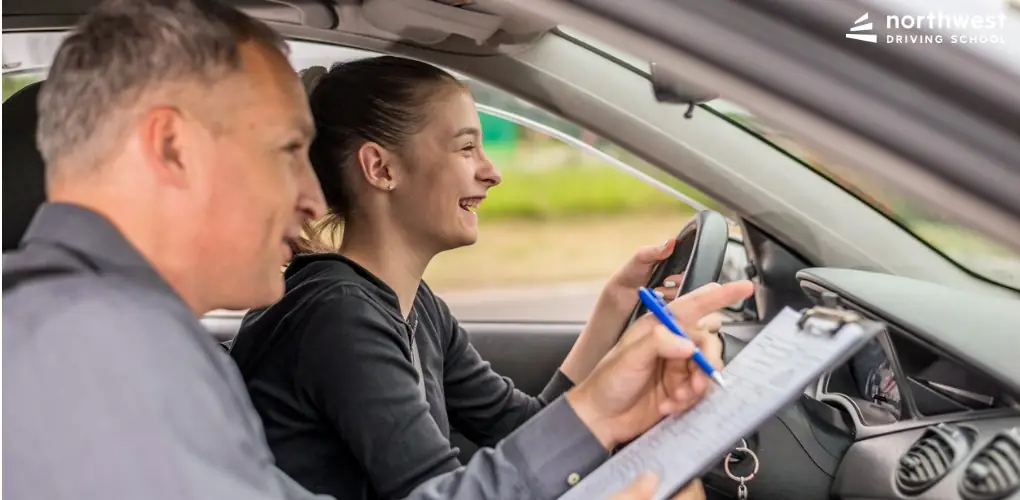- Driving School
What are the Legal Requirements and Documents for a First Time Driver

Becoming a first-time driver is an exciting milestone, but responsibilities and legal requirements must be met. Understanding these requirements and ensuring that all necessary documents are in place are crucial for a smooth and legal driving experience. Below, we detail the essential legal requirements and documents you need as a first-time driver.
Table of Contents
- 1. Obtaining a Learner’s Permit
- 2. Enrolling in a Driver’s Education Program
- 3. Acquiring Car Insurance
- 4. Passing the Driving Test
- 5. Documentation for Driver’s License Application
- 6. Vehicle Registration
- 7. Maintaining Legal Compliance
- 8. Understanding Special Provisions for Young Drivers
- 9. Penalties for Non-Compliance
- Conclusion
1. Obtaining a Learner’s Permit
The first step in becoming a licensed driver is obtaining a learner’s permit. This permit allows you to practice driving under specific conditions. To get a learner’s permit, you typically need to:
- Meet Age Requirements: Most regions require you to be at least 15 or 16 years old.
- Pass a Written Test: This test covers the rules of the road, traffic signs, and safe driving practices.
- Provide Proof of Identity and Residency: Documents such as birth certificates, passports, or utility bills can be used.
- Parental Consent: If you are under 18, you may need a parent or guardian’s consent.
2. Enrolling in a Driver’s Education Program
Many states mandate completing a driver’s education program before you can obtain a full driver’s license. This program typically includes:
- Classroom Instruction: Covering traffic laws, defensive driving techniques, and the effects of alcohol and drugs on driving.
- Behind-the-Wheel Training: Practical driving experience with a certified instructor.
- Completion Certificate: Upon successful completion, you will receive a certificate you must present when applying for your license.
3. Acquiring Car Insurance
Car insurance is legally required to drive in most regions. As a first-time driver, it’s crucial to understand the different types of coverage available:
- Liability Insurance: Covers damages to others if you are at fault in an accident.
- Collision Insurance: Covers damages to your car in case of an accident.
- Comprehensive Insurance: Covers non-collision-related damages such as theft, vandalism, or natural disasters.
- Personal Injury Protection: This covers medical expenses for you and your passengers.
- Uninsured/Underinsured Motorist Coverage: Protects you if you’re involved in an accident with a driver without sufficient insurance.
4. Passing the Driving Test
You can schedule your driving test after fulfilling the learner’s permit and driver’s education requirements. This test usually includes:
- Vision Test: To ensure you meet the minimum vision requirements for driving.
- Knowledge Test: A written or computerized test on road signs, laws, and safe driving practices.
- Road Test: A practical test where an examiner assesses your driving skills on the road.
Read More: What are the Requirements for a Nevada Driver’s License?
5. Documentation for Driver’s License Application
When applying for your driver’s license, you need to bring several documents to the DMV:
- Proof of Identity: Such as a birth certificate or passport.
- Proof of Residency: Utility bills, lease agreements, or school records.
- Social Security Number: Social Security card or tax documents.
- Learner’s Permit: As evidence of completing the learner’s stage.
- Driver’s Education Certificate: If required in your state.
- Proof of Insurance: Documentation from your insurance provider.
6. Vehicle Registration
Once you have a driver’s license, if you own a car, you must register it with your state’s DMV. To register your vehicle, you will need:
- Proof of Ownership: Title or bill of sale.
- Proof of Insurance: Insurance card or policy documents.
- Vehicle Inspection Certificate: Some states require a safety or emissions inspection.
- Registration Application: Complete the form from the DMV.
- Payment for Fees: Registration fees, which vary by state.
7. Maintaining Legal Compliance
As a licensed driver, you must continually comply with traffic laws and regulations. This includes:
- Renewing Your Driver’s License: Most states require renewal every 4-8 years, often necessitating an updated vision test.
- Keeping Insurance Current: Maintaining at least the minimum required coverage.
- Vehicle Inspections: Regular safety and emissions inspections, if required.
- Address Updates: Informing the DMV of any changes in your residence.
8. Understanding Special Provisions for Young Drivers
Many states have special provisions for drivers under 18, often called Graduated Driver Licensing (GDL) systems. These typically include:
- Curfew Restrictions: Limits on driving during late-night hours.
- Passenger Restrictions: Limits on the number of passengers allowed.
- Cell Phone Restrictions: Prohibition of cell phone use while driving.
9. Penalties for Non-Compliance
Failure to comply with driving laws can result in penalties such as:
- Fines: Monetary penalties for violations like speeding or running a red light.
- Points on License: Accumulating points can lead to higher insurance rates and suspension.
- License Suspension or Revocation: Serious violations can lead to losing driving privileges.
Conclusion
Becoming a first-time driver involves more than just passing a test; it requires understanding and adhering to various legal requirements and ensuring you have all the necessary documentation. By following these guidelines, you can ensure that your journey as a new driver starts on the right foot, keeping you safe and compliant with the law.
If you’re looking for drivers ed near me in Las Vegas, Northwest Driving School offers comprehensive lessons to help you gain the knowledge and skills needed to become a safe, responsible driver.


